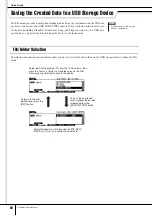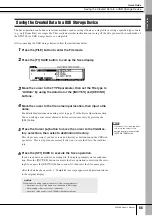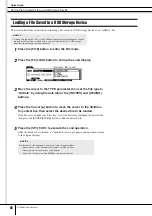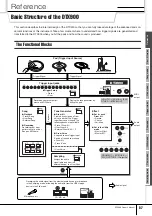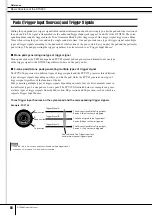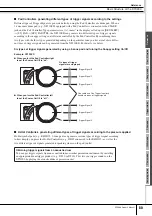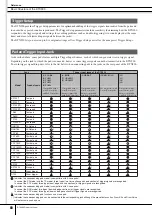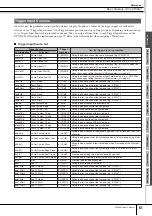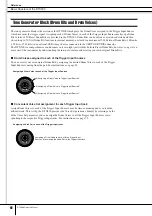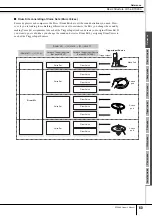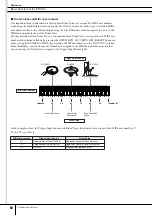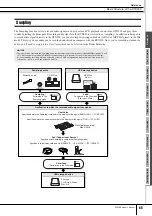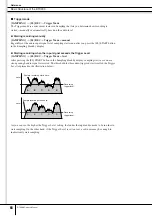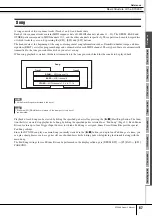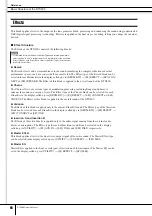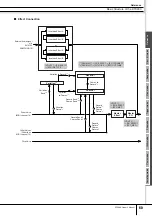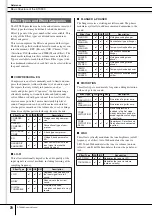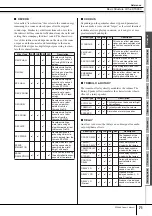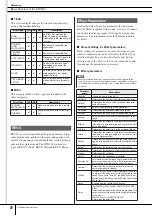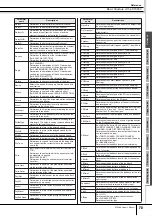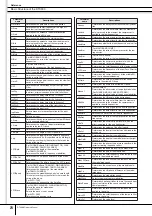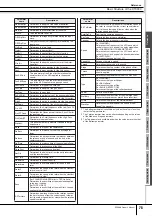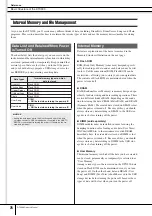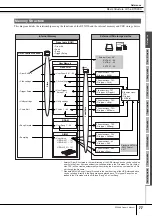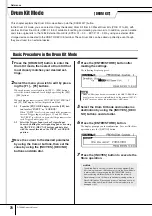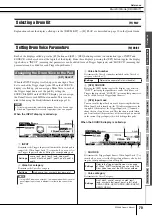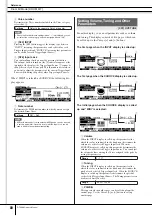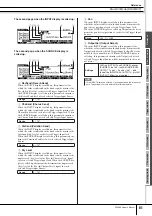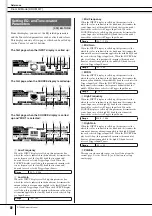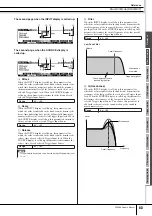
Basic Structure of the DTX900
Reference
68
DTX900 Owner’s Manual
Effects
This block applies effects to the output of the tone generator block, processing and enhancing the sound using sophisticated
DSP (digital signal processing) technology. Effects are applied in the final stages of editing, letting you change the sound as
desired.
■
Effect Structure
The Effects of the DTX900 consist of the following blocks.
●
Reverb
The Reverb effects add a warm ambience to the sound, simulating the complex reflections of actual
performance spaces, such as a concert hall or a small club. The Effect type of the Reverb block can be
selected for each Drum Kit in the display called up via [DRUM KIT]
→
[F4] EFFECT
→
[SF1] CON-
NECT or [SF3] REVERB. The Effect of this block is applied to the overall sound of the DTX900.
●
Chorus
The Chorus effects use various types of modulation processing, including flanger and phaser, to
enhance the sound in a variety of ways. The Effect type of the Chorus block can be selected for each
Drum Kit in the display called up via [DRUM KIT]
→
[F4] EFFECT
→
[SF1] CONNECT or [SF4]
CHORUS. The Effect of this block is applied to the overall sound of the DTX900.
●
Variation
The Effects of this block is applied only to the current Drum Kit sound. The Effect type of the Variation
block can be selected for each Drum Kit in the display called up via [DRUM KIT]
→
[F4] EFFECT
→
[SF1] CONNECT or [SF2] VAR.
●
Insertion A and Insertion B
The Effects of these two blocks is applied only to the audio signal coming from the external audio
device or microphone. The Effect type for each of Insertion A and B can be selected in the display
called up via [UTILITY]
→
[F4] AUX IN
→
[SF3] INS A and [SF4] INS B respectively.
●
Master Effect
This block applies effects to the final stereo output signal of the entire sound. The Master Effect type
can be selected in the display called up via [UTILITY]
→
[F3] EFFECT
→
[SF2] MEF.
●
Master EQ
Master EQ is applied to the final, overall (post-effect) sound of the instrument. The Master EQ can be
set in the display called up via [UTILITY]
→
[F3] EFFECT
→
[SF1] MEQ.
NOTE
• For detailed information about the Effect Types and related parameters,
refer to pages 70 and 72 respectively. For a complete list of the available
Effect Types for each Effect block, refer to the Effect Type List in the sepa-
rate Data List booklet.

